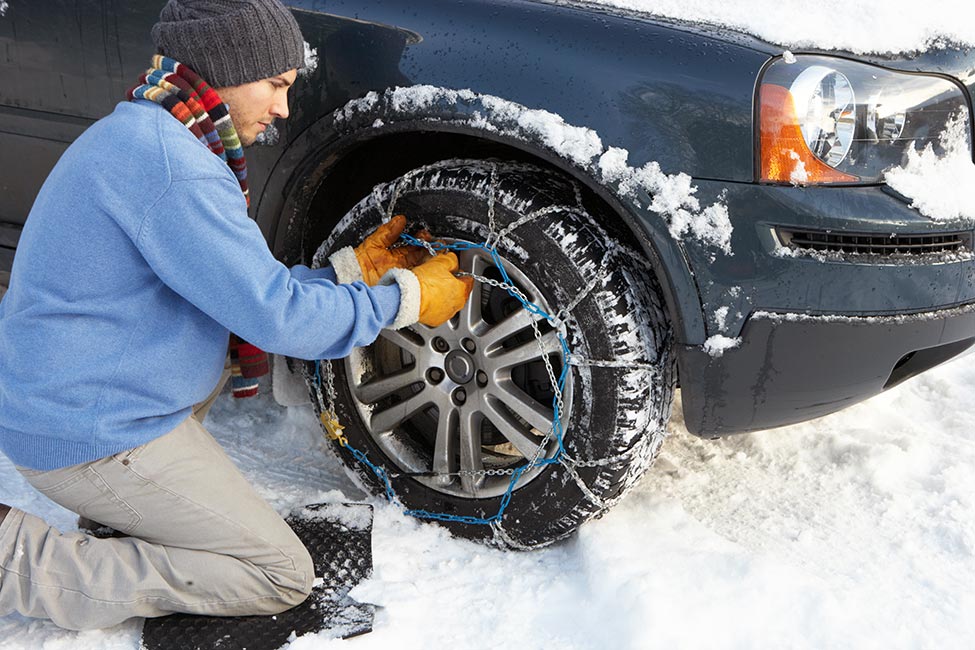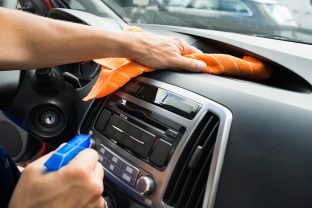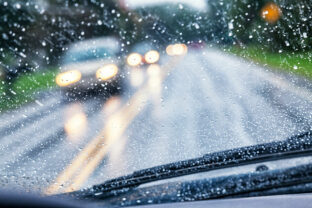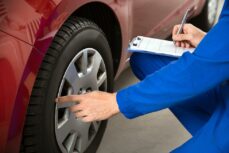How do I fit and remove snow chains ?

What should I check before fitting snow chains ?
Obviously, it will depend on where you’re going to drive, so check if snow chains are required before you take your car abroad. Before buying snow chains, make sure your vehicle is suitable for them by referring to the manufacturer’s instructions. Cars with low-profile tyres may not be suitable for fitting snow chains. If your vehicle cannot be fitted with chains, you can opt for fabric covers, often referred to as snow socks.
Then you should check:
- the size of your tyres : choose the right chain sizes ;
- the traction of your vehicle : since snow chains must be fitted to the drive wheels, knowing whether to fit them on the front or rear wheels is vital ;
- you have the necessary equipment to fit your snow chains : a head torch to free your hands, work gloves to protect your fingers, and chocks to secure your vehicle if you have to fit your chains on uneven ground.
Top tip : if you plan to drive a 4×4 vehicle or a motor home in Europe, it is recommended that you fit chains on all four wheels to optimise grip. In the UK, it is recommended that you fit them to the drive wheels, preferably the rear axle.
Fitting and removing snow chains : the steps
Fitting snow chains is not very complicated, but you need to follow a precise procedure :
- Choose a safe, flat spot with plenty of room to manoeuvre, and make sure the handbrake is on.
- Carefully untangle your chains.
- Lay them flat, with the lugs facing the ground, next to the vehicle’s wheels.
- Pass one end of the chain from the back of the tyre towards the front.
- Grab the two ends of the chains on either side, then pull them up onto the top of the tyre to hook them.
- Adjust the chain, making sure it is evenly distributed on both sides of the tyre.
- Close the chain using the four hooks on its sides. Connect them in pairs to form a cross.
- Use the chain tensioner to tighten the chain. It should run diagonally along the outside of the tyre.
If you have manually tensioned chains, drive the vehicle for a few yards after installing them on your tyres. Then stop to re-tighten the chain. If you have an automatically tensioned model, the tension will adjust itself while you drive.
To remove your chains :
- Move your vehicle so that the top hook is at the top of the wheel.
- Detach all the hooks and fasteners.
- Lay the snow chain flat, making it level with the front and rear of the tyre.
- Roll it forward to release the chains.
Once the chains have been removed, immerse them in hot water. Dry them to prevent oxidation, then store them under a cover.
Driving with snow chains
Certain precautions need to be taken when driving with snow chains :
- Only drive with snow chains on snow or ice. Remove them as soon as the tarmac is visible again to avoid damaging the chains or the road.
- Reduce your speed : we recommend not driving faster than 30 mph.
- Drive smoothly : avoid sudden braking or accelerating too quickly, as these actions can damage the chains or throw up stones and ice.
- Take bends slowly.
- Do not leave snow chains on if you have to park the vehicle for a long time.
Driving on a snow-covered road can quickly become dangerous without the right equipment. In order to take advantage of the safety guarantees offered by snow chains, it’s important to follow the rules for fitting and using them. Don’t hesitate to practise fitting and removing chains before you set off !














